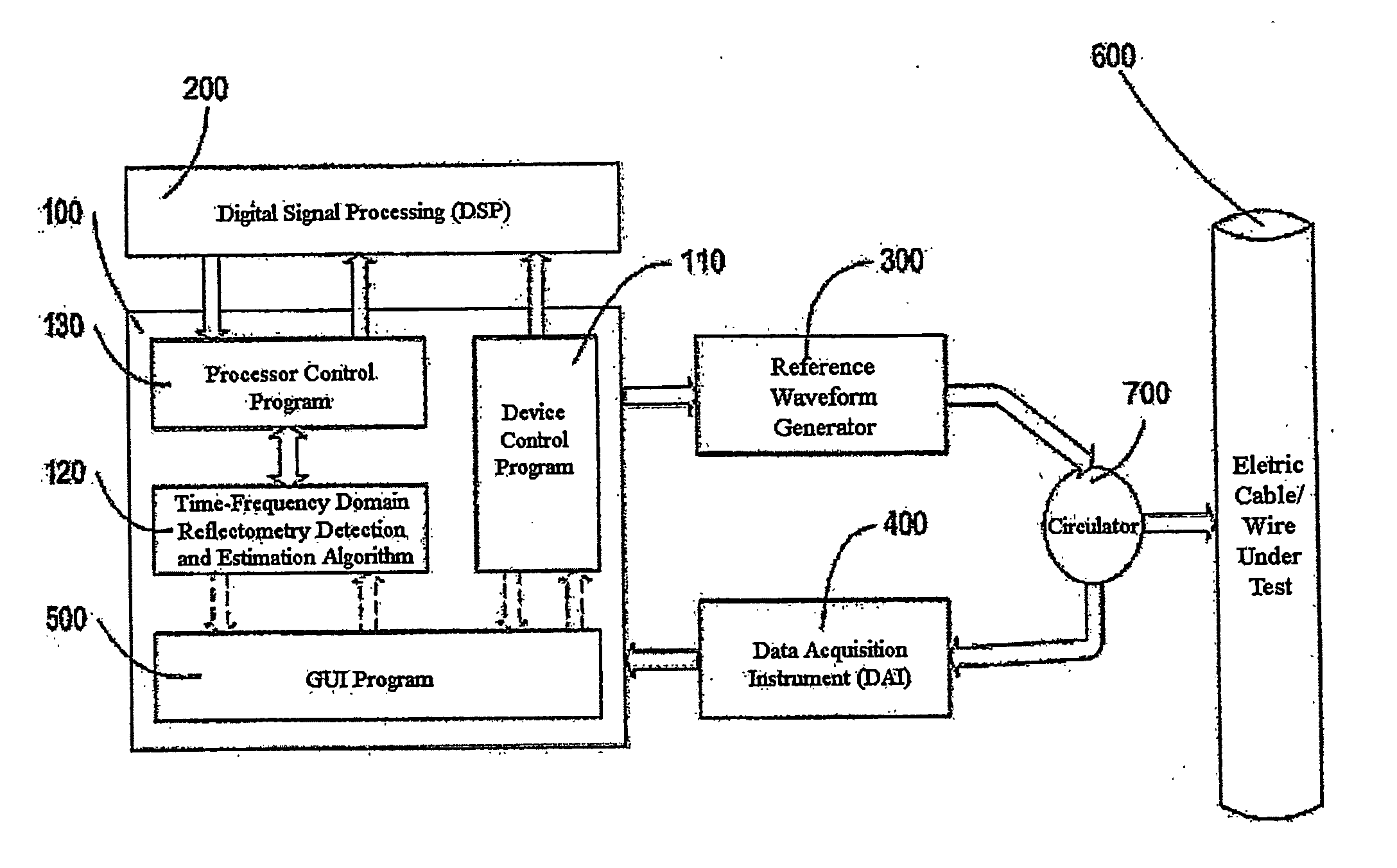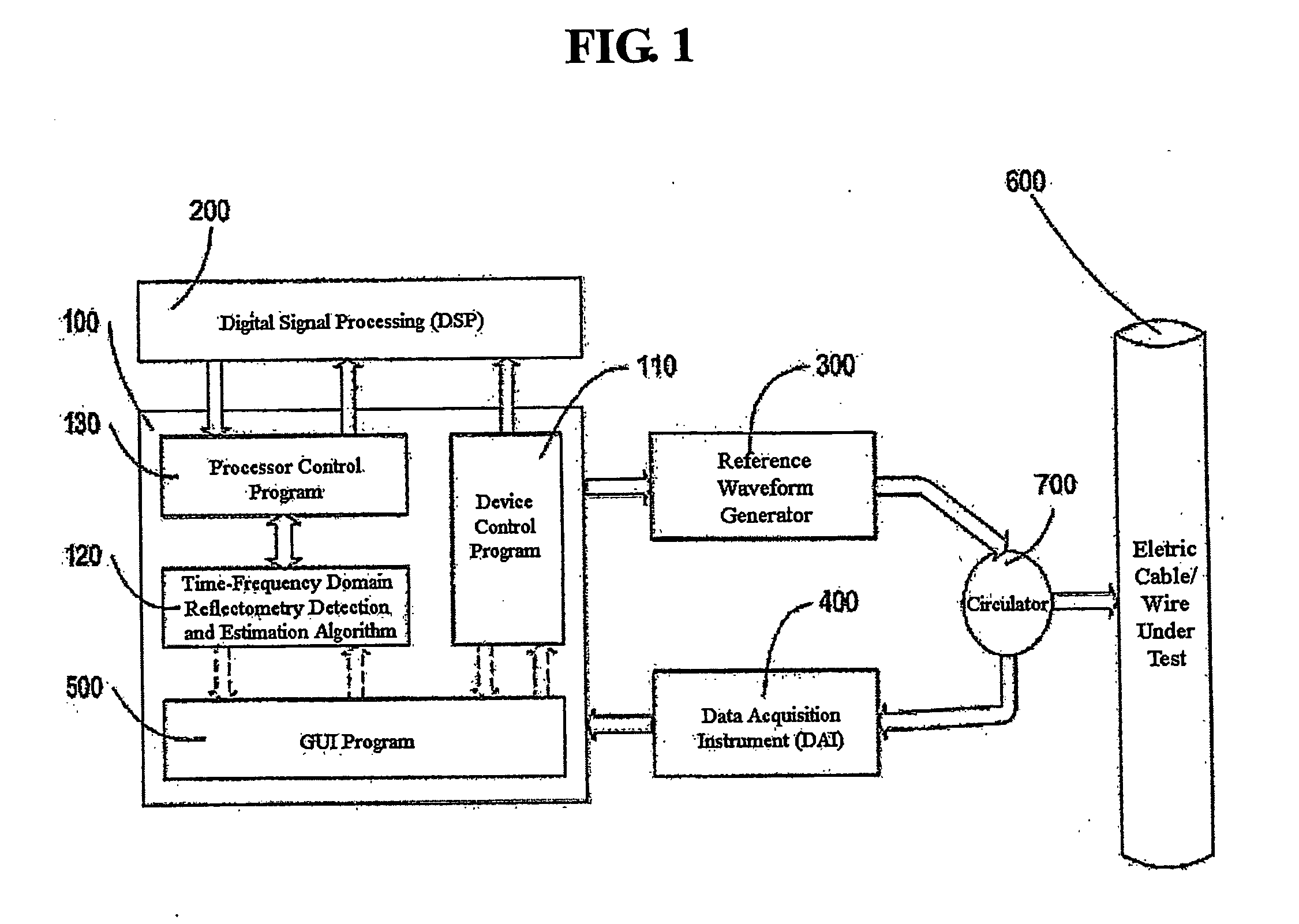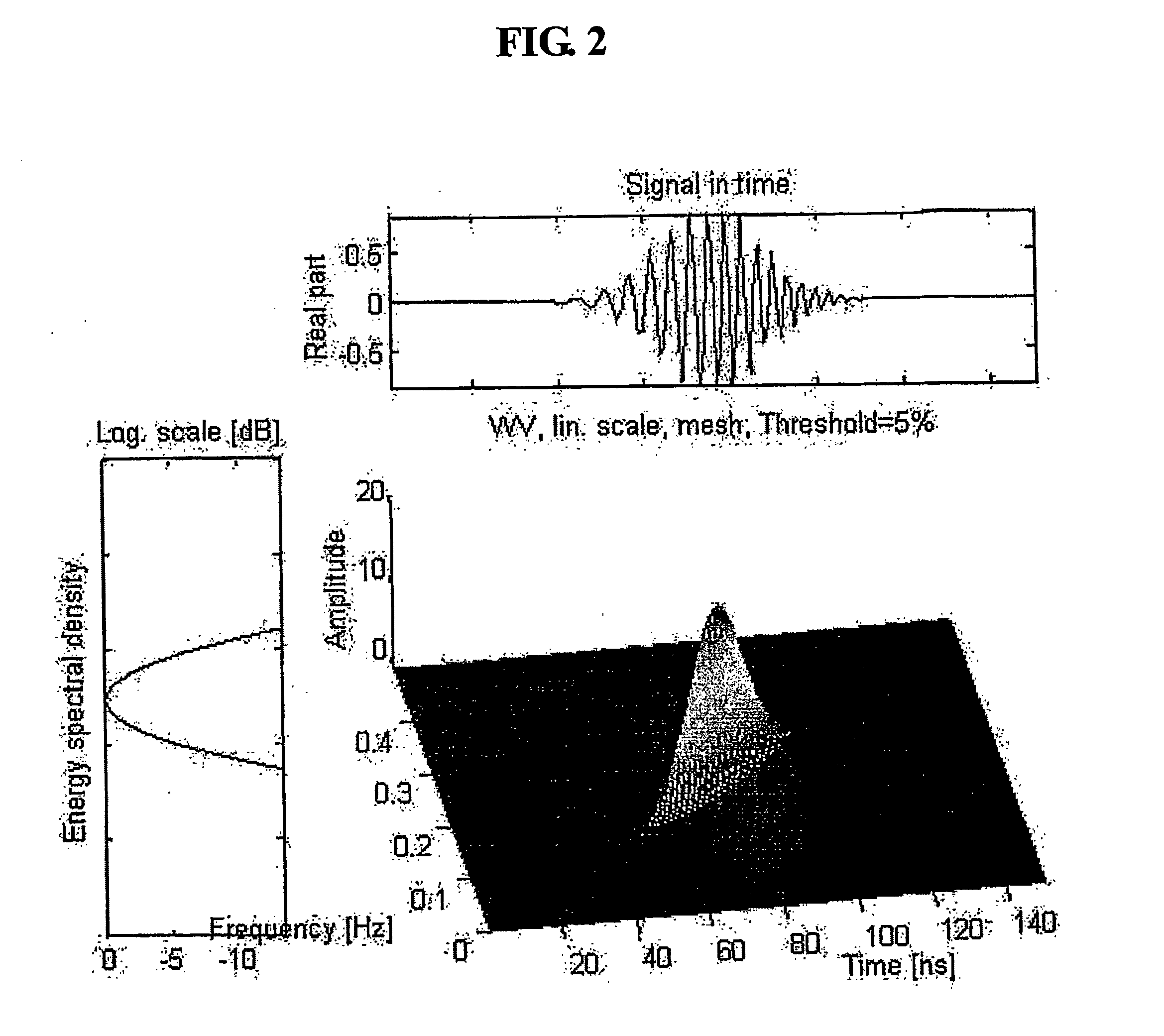Time-frequency domain reflectometry apparatus and method
a reflectometry and time-frequency domain technology, applied in the direction of cables, line-transmission details, instruments, etc., can solve the problems of limited detection and localization accuracy, serious damage to the overall system, wiring problems,
- Summary
- Abstract
- Description
- Claims
- Application Information
AI Technical Summary
Benefits of technology
Problems solved by technology
Method used
Image
Examples
Embodiment Construction
[0034] Now, construction of the present invention is explained below in more detail by describing the implementation of the invention with the accompanying drawings.
[0035]FIG. 1 is a block diagram showing control process in a time-frequency domain reflectometry apparatus in accordance with the present invention.
[0036] As shown above, Numeral 100, which represents a personal computer (PC), is a device where the main program of a time-frequency domain reflectometry apparatus in accordance with the present invention is executed.
[0037] Numeral 200, representing a DSP, computes time-frequency distribution functions.
[0038] Numeral 300, representing an AWC; generates input reference signals for a wire / conductor under test.
[0039] Numeral 400, representing a DAI, acquires reflected signal from a wire / conductor under test as well as input signal generated by an AWG via a circulator, and stores the same.
[0040] For the execution of the detection and localization, the above AWG 300 generat...
PUM
| Property | Measurement | Unit |
|---|---|---|
| time- | aaaaa | aaaaa |
| frequency | aaaaa | aaaaa |
| time delay | aaaaa | aaaaa |
Abstract
Description
Claims
Application Information
 Login to View More
Login to View More - R&D
- Intellectual Property
- Life Sciences
- Materials
- Tech Scout
- Unparalleled Data Quality
- Higher Quality Content
- 60% Fewer Hallucinations
Browse by: Latest US Patents, China's latest patents, Technical Efficacy Thesaurus, Application Domain, Technology Topic, Popular Technical Reports.
© 2025 PatSnap. All rights reserved.Legal|Privacy policy|Modern Slavery Act Transparency Statement|Sitemap|About US| Contact US: help@patsnap.com



